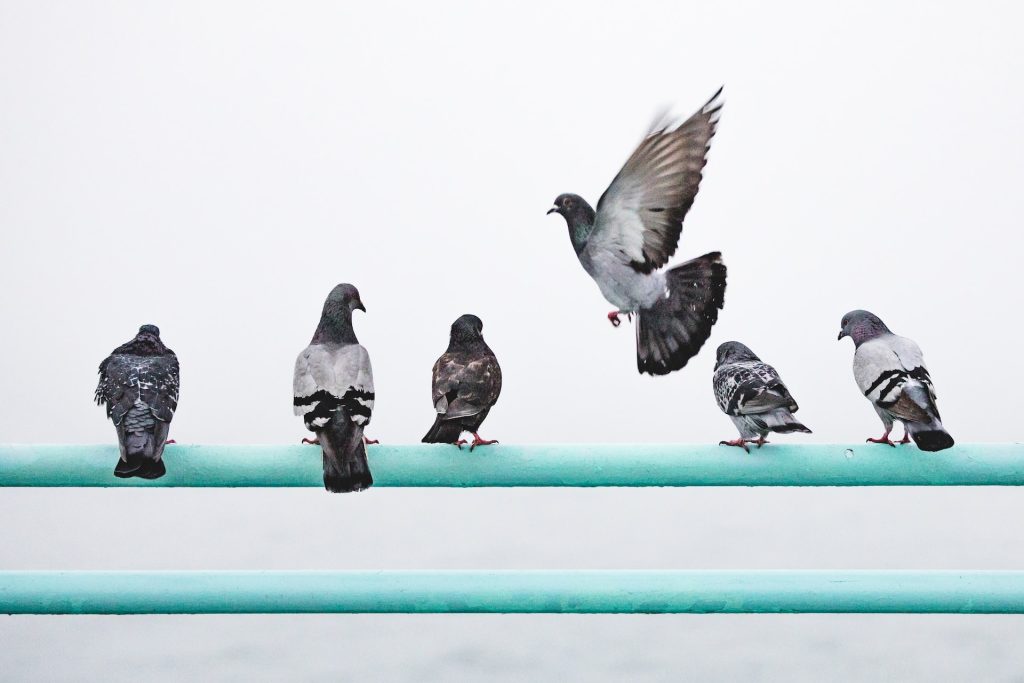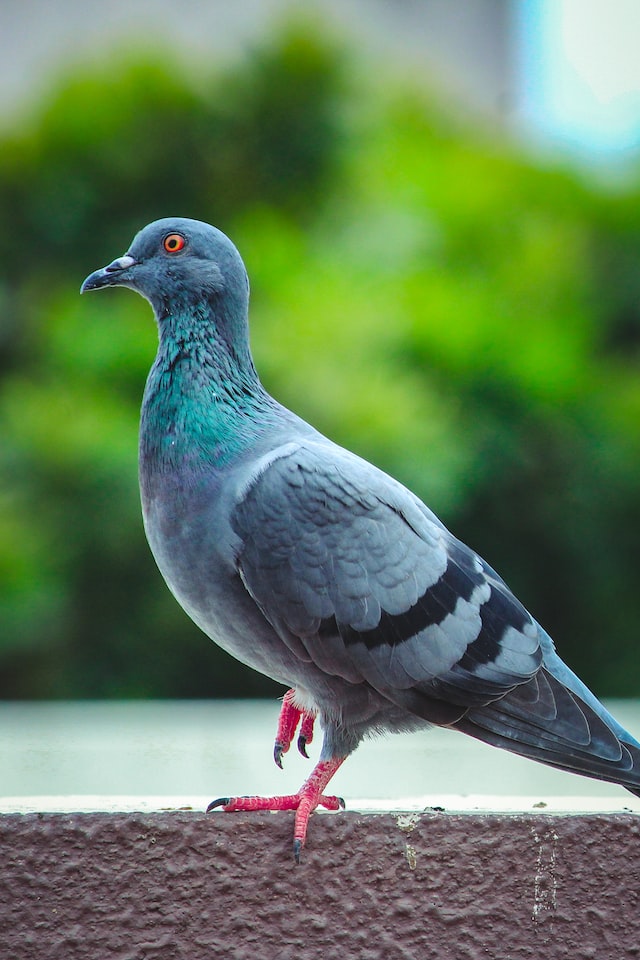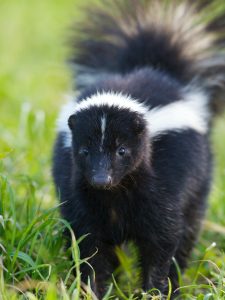Pigeons are a common sight in urban areas and can be found roosting on buildings, nesting in eaves, and creating a mess with their droppings. While pigeons are harmless to humans, they can cause property damage and create unsanitary conditions. If you’re dealing with a pigeon problem, it’s important to remove them humanely and effectively. In this guide, we’ll discuss how to get rid of pigeons, the different methods of pigeon removal and how to prevent them from returning.

Step 1: Identifying the Pigeon Problem
The first step in pigeon removal is identifying the problem. Pigeons are most commonly found roosting on ledges, rooftops, and in attics. If you see large groups of pigeons gathering on your property, or if you notice pigeon droppings on your roof or in other areas of your property, you likely have a pigeon infestation. But before you start actively removing any pigeon, it’s important to identify the extent of the problem. Observe where the pigeons roost and feed, and look for their nesting sites. Note the amount of pigeon droppings in those areas. Once you know where pigeons are present, you can take steps to deter them.
Prevention Tips
Step 1: Make your property less attractive to wildlife.
One of the most effective solutions to any pigeon population taking hold of your property is to prevent them from settling down and choosing your home as a habitat in the first place.
- Trim trees and bushes: Pigeons like to nest in trees and bushes, so keep them trimmed to reduce the likelihood of nesting.
- Install Bird Netting: Bird netting is a physical barrier that prevents pigeons from nesting on your property. It’s an effective way to keep pigeons out of certain areas. Install bird netting on eaves, balconies, patios and other areas where pigeons like to nest.
Step 2: Eliminate Food Sources
Pigeons are attracted to food, so eliminate any sources of birdseed or food left outside. This will give them fewer reasons to come to your property. Store pet food inside and use squirrel-proof bird feeders to prevent pigeons and other pest birds from accessing them.
Clean up food waste and be sure to clean up spills and dispose of garbage regularly. You do not want to feed pigeons, even if it is unintentional.

Repelling pigeons
Step 3: Try Pigeon Repellent Options
If prevention tips aren’t enough, there are several repellent options available to keep pigeons from roosting on your property. Here are a few options that have been proven to deliver an effective solution:
- Bird spikes are small spikes that can be installed on areas where pigeons like to perch. These spikes create an uneven surface that makes it difficult for pigeons to sit on and nest. This is a humane way to deter pigeons from landing on your property. Install bird spikes on ledges and rooflines where pigeons like to roost making it uncomfortable for them to land. Pigeons hate them!
- Sound deterrents: These devices emit a high-pitched sound that is unpleasant for birds, discouraging them from roosting.
- Visual deterrents: These include reflective objects or objects that move in the wind, such as balloons or flags,or even a wind chime to scare away birds.
Pigeon repellent sprays and gels can be an effective way to deter pigeons from landing and roosting on your property. Spray pigeon repellent on surfaces where pigeons roost, such as window sills or ledges.
Step 5: Use Scare Tactics
Scare tactics, such as decoy kites, reflective surfaces, and wind chimes, can be an effective way to scare pigeons and deter them from landing and roosting on your property. Hang reflective tape or other visual repellents near areas where pigeons like to roost.
Step 6: Consider Natural Predators
Certain birds of prey, such as hawks and falcons, can be used as natural predators to control the pigeon population. Pigeons hate and fear them. This is a natural way to get rid of pigeons, but it can be expensive and not practical for all situations. Hire a falconer to fly hawks on your property to scare pigeons away.
Step 7: Exclude Pigeons
To get rid of pigeons completely, you need to exclude them from your property. This involves sealing all entry points and preventing them from accessing any roosting and nesting areas.
Seal off access points: Pigeons can enter through small openings in your property, so seal off any gaps or holes to prevent them from entering and consider all typical spots where birds nest.
After having sealed any gaps in the roof or walls, install bird netting over open vents, and block any openings suitable for possible pigeon nests or where pigeons could enter.
Hire Professional Wildlife Removal Assistance
If you’re unable to address your pigeon problem on your own, or if the problem is severe, it may be necessary for step 8: Seek the help of a professional bird control service. These services can help to assess the situation and recommend appropriate measures for removal and prevention.
If you have a large commercial property with a significant pigeon problem, a pest control professional can provide a comprehensive solution that includes bird netting, bird spikes, and exclusion techniques that help keeping pigeons away.

FAQ
What about Trapping Solutions?
Trapping pigeons is another option for removing them from your property. It is in our opinion best left to a professional wildlife removal company though. Live traps can be used to capture pigeons, which can then be released elsewhere. However, it’s important to note that trapping and relocating pigeons may not be legal in all areas, so be sure to check with your local authorities.
How can you remove a bird from a big warehouse?
There are several ways to accomplish this safely and humanely, but it can be challenging to remove a bird from a big warehouse. That is why we recommend a professional bird removal specialist, in general. Here is what you can do:
- Open doors and windows: If possible, open all doors and windows to provide an easy escape route for the bird.
- Use a net: You can use a net to catch the bird and release it outside. Be sure to use a soft mesh net, and wear gloves to protect your hands.
- Set up a bird trap: Bird traps can be an effective way to capture birds. Place the trap in a location where the bird has been seen, and use birdseed as bait.
- Use a mist net: A mist net is a fine mesh net that can be used to capture birds in flight. It’s important to have experience using a mist net and to handle the bird gently when it’s caught.
- Use bird deterrents: If birds are frequently entering the warehouse, consider using bird deterrents such as spikes or netting to prevent them from entering.
- Seek professional help: If you are unable to remove the bird safely or humanely, it’s best to contact a pest control professional or a licensed wildlife rehabilitator for assistance.
It’s important to remember that birds can become stressed or injured if not handled properly, so it’s essential to approach the situation with care and caution!

What is there to know about the release of a trapped pigeon?
If you’ve trapped a pigeon and want to release it, there are some important things to keep in mind to ensure a safe and humane release.
- Check for Injuries: Before releasing a trapped pigeon, check for any injuries. If the pigeon is injured, contact a wildlife rehabilitation center or a licensed wildlife rehabilitator for assistance.
- Choose a Safe Location: Choose a safe location for releasing the pigeon. It should be an open area with trees or other areas for the pigeon to seek shelter. Avoid releasing pigeons in areas with heavy traffic, predators, or other hazards.
- Provide Food and Water: If the pigeon has been trapped for a long period, it may be hungry and thirsty. Provide food and water for the pigeon before releasing it.
- Handle with Care: Handle the pigeon with care when releasing it. Hold the pigeon gently and release it in a smooth motion to prevent any injuries.

Preventing Future Pigeon Problems
Preventing pigeon problems is an ongoing process. Once you’ve removed pigeons humanely from your property, it’s important to take steps to prevent them from returning. Here are some tips:
- Keep your property clean: Pigeons are attracted to areas with food and water sources. Keep your property free of debris, food waste, and standing water to discourage pigeons from roosting and nesting on your property.
- Regularly clean bird droppings: Pigeon droppings can cause damage to buildings and create unsanitary conditions. Regularly clean up all pigeon feces to prevent them from accumulating and attracting more pigeons.
- Use pigeon-proof bird feeders: Pigeons are notorious for accessing bird feeders and stealing food meant for other birds. Use pigeon-proof bird feeders that prevent pigeons from accessing the food.
- Install bird slope: A bird slope is a physical barrier that prevents birds from landing on surfaces. Install bird slopes on ledges, rooflines, and other areas where pigeons like to roost.
- Use bird gels: Bird gels are sticky substances that prevent birds from landing on surfaces. Apply bird gel to ledges and other areas where pigeons like to roost.
- Install scare devices: Scare devices, such as owl decoys and scarecrows, can be an effective way to deter pigeons from landing and roosting on your property.
- Use pigeon birth control: Pigeon birth control is a humane way to control the pigeon population. It involves feeding feral pigeons a special food that contains a contraceptive. This method is effective, but it may take several months to see results.
- Consider natural landscaping: Natural landscaping, such as planting thorny bushes and trees, can deter pigeons from landing on your property. Pigeons prefer flat surfaces, so planting spiky plants can make your property less attractive to them and keep nesting pigeons out.
- Educate your neighbors: Pigeon problems often stem from neighboring properties. Educate your neighbors on the importance of keeping their properties clean and free of food sources to stop pigeons and other unwanted bird species from roosting and nesting on your property.
It can be a challenging task to get rid of pigeons, but by taking preventative measures, using repellents, and seeking professional help when needed, you can keep birds like pigeons at bay.
Removing pigeons from your property requires a combination of tactics, including deterring or keeping pigeons out, preventing them from nesting, and excluding them from your property. It’s important to choose a humane approach that does not harm pigeons or other wildlife but is keeping the birds away.
Don’t let a pigeon infestation cause damage to your property or pose health risks to you and your family. Take action today to address the problem and prevent it from returning!
By employing these strategies and taking steps to prevent pigeon problems in the future, you can keep both residential and commercial properties clean and safe from pigeon damage.






